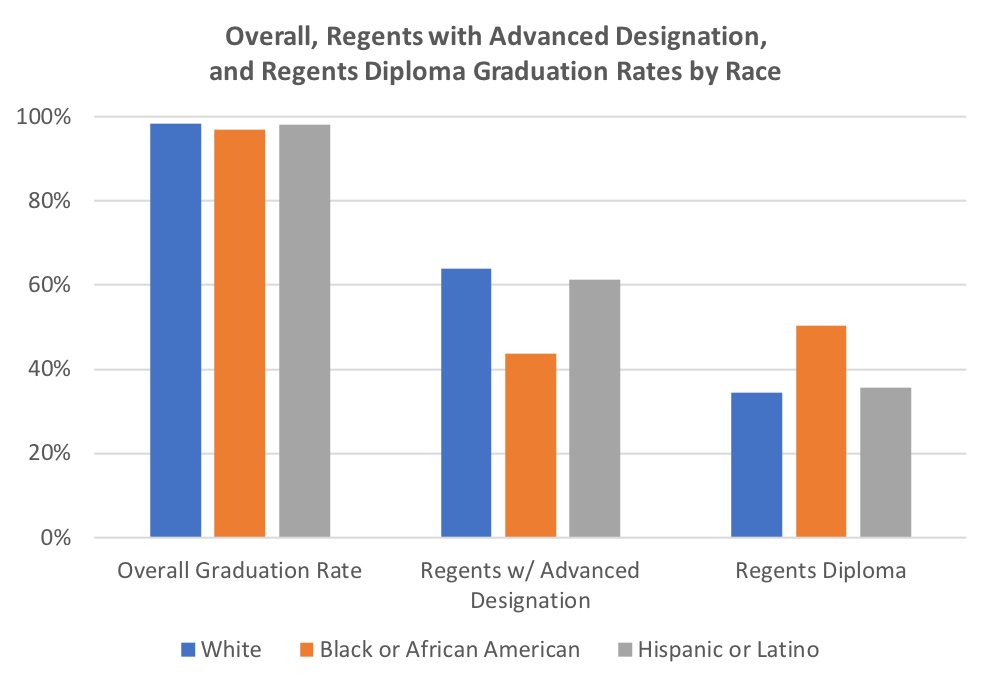Baldwin High ranks among best in state
Baldwin High lands toward top of the rankings

U.S. News & World Report recently ranked Baldwin Senior High School just shy of the top 25 percent of high schools in the state and in the top 21 percent in the nation, among 18,000 high schools across the country. BHS jumped 60 places in the state ranking, moving up to 383rd in New York.
The ranking reflected Baldwin High’s performance for the 2018-19 school year. Schools were not ranked in 2019-2020 or 2020-21 because the coronavirus pandemic would have skewed the statistics used to decide the rankings.
BHS Principal Dr. Neil Testa said, “Receiving this prestigious accolade, especially during such a challenging year, is yet another example of why Baldwin is such a special place to live and work.”
The rankings are based on college preparedness, including participation and performance in various 12th-grade assessments and graduation rates; however, U.S. News & World Report did not factor in Baldwin High’s dual-enrollment courses or its Academic Academies, a specialized school-to-career program.
Superintendent Dr. Shari Camhi explained that because of these college-oriented programs, along with the district’s future partnership with Nassau Community College in the fall, “many of our seniors will go on to their college of choice with college credits already on their transcript, which can ultimately lower tuition costs and lessen student loan debt.”
The U.S. News & World Report rankings are based on six criteria that not only address overall student performance and participation, but also equity for underserved students, which include Black, Hispanic and economically disadvantaged students, as defined by participation in a reduced-priced or free lunch program.
Baldwin High boasts a 97 percent graduation rate, 12 percentage points above the state average of 85 percent, making graduation Baldwin’s leading ranking factor. It placed 222nd in the state for graduation, putting BHS in the top 18th percentile in New York.
BHS was 276th in the state in number of students taking Advanced Placement exams and 295th in the number of students scoring at least a 3 on the exams, the passing grade that is the minimum score to receive course credit at many colleges. In total, 44 percent of Baldwin students took at least one AP exam, and 75 percent of students taking exams scored at least a 3.
White BHS students were 1.5 times more likely to take AP exams than Black students, and Hispanic students were 1.2 times more likely. There was no statistical difference in scores among the racial groups of students who took the AP exams.
On state Regents exams, BHS landed squarely in the middle of the state results, in the 50th percentile, in terms of exam performance and proficiency.
U.S. News & World Report stated, “In all 50 states, there is a very positive statistical relationship between the proportion of a student body that is Black, Hispanic and/or from a low-income household and a school's results on state assessments.”
While there was no difference among races in the percentage of students graduating from Baldwin High, 64 percent of white and 61 percent of Hispanic students graduated with a Regents Diploma with Advanced Designation, which means students scored a 90 or higher on all required state exams, versus 44 percent of Black students, according to New York State Education Department data.
In 2018-19, about 21 percent of the economically disadvantaged students in Baldwin were white, followed by 25 percent who were Black and 44 percent who were Hispanic.
Erase Racism President Elaine Gross said in an e-mail that the organization had not conducted intra-district research into AP score disparities and would not comment specifically on Baldwin’s scores; however, based on national research, insights into disparities in AP exam enrollment "would require a fuller investigation," asking such questions as, “What have been the resources to help Black students throughout their education that prepare and encourage them to enroll in AP courses? Are there institutional policies that would impede their enrollment?”
On May 12, the Board of Education adopted a new Equity, Inclusivity and Diversity in Education policy, which acknowledges that “racism, discrimination and marginalization of any people or groups of people, whether intentional or not, have no place in our schools.”
The board also edited an existing Recruiting and Hiring policy to include “recruiting, employing, supporting and retaining racially, ethnically and linguistically diverse – as well as culturally competent – administrative, instructional and support personnel.”

 44.0°,
Mostly Cloudy
44.0°,
Mostly Cloudy 




